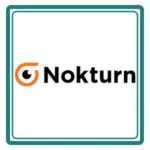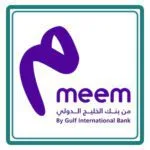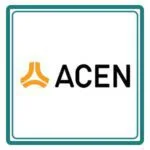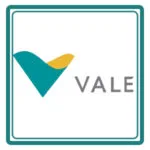ISO 9001 Certification in Saudi Arabia
Get Free Consultation
PopularCert is your trusted partner for seamless ISO certification, offering expertise and tailored solutions to meet your business needs. ISO 9001 Certification in Saudi Arabia helps you build a QMS that lives up to global standards. Get ISO 9001 Certification In Saudi Arabia to build a QMS that meets global standards. We offer the best ISO 9001 consultants at a competitive cost.
Why ISO 9001 Certification is Important in Saudi Arabia
ISO 9001 Certification In Saudi Arabia is a key factor in establishing trust with customers and clients, regardless of the size of your business. It demonstrates that your organization meets internationally recognized quality standards, ensuring potential customers that you are committed to delivering consistent, high-quality products or services.
Beyond improving reputation, ISO 9001 helps companies streamline operations and improve efficiency. The standard requires businesses to identify and eliminate inefficiencies, reduce waste, and optimize processes, which ultimately lowers costs and enhances overall productivity. By improving internal processes, companies in Saudi Arabia can operate more effectively and deliver better value to their customers.
Furthermore, ISO 9001 helps businesses stay compliant with both local regulations and international standards, reducing the risk of legal issues. As Saudi Arabia’s regulatory landscape continues to evolve, businesses must ensure that they meet compliance requirements, and ISO 9001 provides a clear framework for doing so. This reduces the likelihood of penalties while ensuring businesses operate in a legally sound manner.
How to Get ISO 9001 Certification In Saudi Arabia?

Process to Get ISO 9001 Certification In Saudi Arabia
Consultation and Gap Analysis
PopularCert’s specialists assess your organization’s specific requirements and existing systems. We conduct a thorough gap analysis to pinpoint areas needing improvement to meet ISO standards.
Planning, Documentation, and Policy Development
Following the gap analysis, we create a customized implementation plan, define resource needs, and assist in developing necessary policies and documentation. These are seamlessly integrated into your current organizational framework.
Training and Awareness
Comprehensive training ensures your team understands ISO requirements and their responsibilities in maintaining the management system effectively.
Internal Audit and Management Review
We perform internal audits to evaluate system effectiveness and address any non-conformities. A management review aligns the system with your organization’s objectives and ISO standards.
External Certification Audit and Certification
After successfully completing the external audit by the certification body, your organization will be awarded the ISO 9001 certificate. This certification highlights your commitment to quality management and continuous improvement. It demonstrates your dedication to meeting international standards, enhancing your credibility and customer trust.
Benefits Of ISO 9001:2015 In Saudi Arabia
- Improved Customer Satisfaction : ISO 9001:2015 ensures that businesses consistently deliver high-quality products and services, leading to enhanced customer satisfaction. By focusing on customer needs and expectations, companies can better meet and exceed them, fostering loyalty and long-term relationships.
- Increased Efficiency : By streamlining internal processes, ISO 9001:2015 reduces inefficiencies and waste, helping businesses operate more smoothly. This improved efficiency allows companies to achieve more with fewer resources, cutting operational costs while maintaining high standards.
- Enhanced Productivity : With clear processes in place, employees can work more effectively, contributing to higher levels of productivity. This enables businesses to handle more tasks and deliver projects faster without compromising quality, ultimately improving profitability.
- Continuous Improvement : ISO 9001:2015 fosters a culture of continuous improvement, encouraging businesses to regularly assess their processes, identify areas for enhancement, and implement changes. This ongoing cycle of improvement allows businesses to stay competitive and adaptable to market changes.
- Regulatory Compliance : ISO 9001:2015 ensures that businesses adhere to both local regulations and international standards, making it easier to meet legal and compliance requirements. This reduces the risk of fines and penalties, while also improving the company’s reputation for reliability.
- Attractive to Investors and Partners : ISO certification makes companies more appealing to investors and business partners by demonstrating a commitment to quality, risk management, and sustainability. This can open doors to new business opportunities, joint ventures, and increased investment.
Types Of ISO Certification In Saudi Arabia
- ISO Certification In Saudi Arabia
- ISO 9001 Certification
- ISO 14001 Certification
- ISO 45001 Certification
- ISO 22000 Certification
- ISO 27001 Certification
- ISO 17025 Certification
- ISO 13485 Certification
- CE Mark Certification
- ISO 20000-1 Certification
- GMP Certification
- Halal Certification
- SOC-1 Certification
- SOC-2 Certification
Get Free Consultation
Our Clients


















Overview Of Quality Management In Saudi Arabia
A Quality Management System (QMS) ensures consistent quality in business processes, focusing on continuous improvement and customer satisfaction. ISO 9001 helps build a QMS that meets global standards. One important concept in ISO 9001 is the Process Approach, which views a business as a series of interconnected processes. It breaks operations into five checkpoints: Sources of Inputs (previous processes providing resources), Inputs (materials or information needed), Activities (actions performed), Outputs (results of the process), and Receivers of Outputs (where outputs go). By analyzing operations this way, companies gain better visibility into their processes and can prioritize areas that directly impact customer satisfaction.
PDCA Cycle In ISO 9001:2015 - Steps For Continuous Improvement In Saudi Arabia
Plan
- Identify internal and external factors affecting operations.
- Define quality objectives, engage leadership, and allocate necessary resources.
- Adopt risk-based thinking to identify potential risks and set measurable goals.
Do
- Implement the processes outlined during planning.
- Focus on controlling production and service delivery to meet quality standards.
- Manage risks and ensure smooth, error-free operations.
Check
- Evaluate performance against planned objectives.
- Conduct internal audits to identify nonconformities and areas for improvement.
- Verify compliance with ISO 9001 standards and assess the quality management system.
Act
- Address issues by implementing corrective actions.
- Identify root causes of problems and take steps to prevent recurrence.
- Top management reviews the system regularly to drive ongoing improvement and maintain quality.
Cost Of ISO 9001 Certification In Saudi Arabia
The cost of ISO 9001 Certification in Saudi Arabia depends on the size of the organization, the complexity of its quality management system, and its current compliance level. Typical expenses include gap analysis, training, documentation preparation, audits, and implementation support. PopularCert offers tailored and cost-effective solutions to help businesses in Saudi Arabia achieve ISO 9001 certification, ensuring consistent quality, compliance, and continual improvement.
Why Choose PopularCert For ISO 9001 Certification In Saudi Arabia?
PopularCert is a globally trusted consulting firm specializing in certification, advisory, and auditing services. When it comes to ISO 9001 certification in Saudi Arabia, we are the top choice for businesses. Our experienced and ethical consultants have a proven track record of success, ensuring a smooth and efficient certification process tailored to your needs. For more information and to apply for your ISO 9001 Certification In Saudi Arabia, We will guide you through the process and provide details on the cost involved to help you get started on your ISO 9001 journey with PopularCert in Saudi Arabia.
GET A FREE CONSULTATION NOW
FAQ
How lots does ISO 9001 certification in Saudi Arabia price?
The rate varies, depending on your enterprise’s length, complexity, and ISO standards selected. Give us a call for a quote especially made for you.
How lengthy to get ISO 9001 certification in Saudi Arabia?
The duration depends on your organization’s readiness and selected ISO standards. We usually goal to complete our tasks within agreed time frames.
Why Popularcert for ISO 9001 consultancy providers in Saudi Arabia?
PopularCert is trusted for ISO services in Saudi Arabia, regarded for its successful track document. We offer custom designed solutions, clear pricing, and regular help.
Which Saudi Arabia organizations normally go for ISO 9001 certification?
ISO 9001 certification blessings diverse industries in Saudi Arabia, boosting credibility, operational efficiency, and possibilities in new markets and businesses.
How to start ISO 9001 certification process in Saudi Arabia with Popularcert?
Simply reach out to us, and we’ll arrange an initial consultation and evaluation. We’ll guide you step by step through the ISO 9001 certification process.
